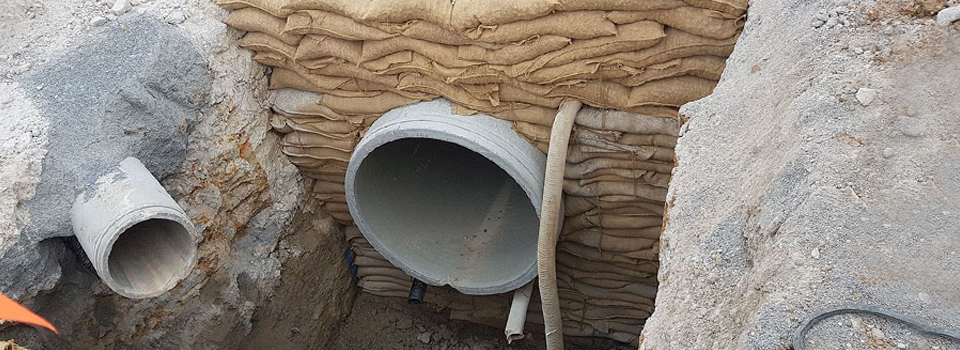How to fill up sandbags

How do I prepare my sandbag?
Sandbags are incredibly useful for applications including water diversion and retaining walls. While they won’t stop the weather completely, correctly placed sandbags around your home or business can reduce the impact of flooding and the amount of water entering your property. Generally sold empty, they are an essential addition to any drainage, construction or road work operation.
What do I use to fill my sandbag?
As the name suggests, sand is the best filler for sandbags. A heavy-bodied sand is a must to avoid spilling through the fibres of the bag. Soil, clay or gravel are not recommended because of their permeability. The weight of the sand also ensures the bags cannot be easily displaced, creating a more effective barrier or load.
Step 1: Purchase bags specifically designed for sandbagging
Standard cotton or plastic bags can tear or break apart when wet, making them near useless for sandbagging. To create an effective sandbag, you will need either woven polypropylene or hessian sacks designed specifically for stacking and keeping water out. Though available in a variety of sizes, the optimal size for sand bagging is between 32-46cm wide and 76-91cm deep. Polypropylene and hessian sandbags are both heavy-duty and resistant to wear and tear, making them an ideal solution for preventing sediment from entering drains.
Step 2: Use heavy sand to fill your bags
Depending on what you are using the sandbags for, soil can sometimes work if you don’t have any sand available, but it can break apart and leak through the woven bag if it gets wet. The sand you can find at the beach is generally too fine to fill a sandbag, so your best option is to check your local hardware store. Any play sand or similar will work well for most applications.
Step 3: Don protective wear
Sandbags can be chemically treated, so it always recommended you wear heavy-duty gloves and boots. Ensure you are wearing protective eyewear to shield against small sand particles, particularly in windy environments. You can also protect your work surface and make clean up easier by laying down some plastic bags in case of accidental spills.
Step 4: Grab a friend to make the filling process easier
Filling up a sandbag is almost always a two-person job. It can be difficult to keep the sandbag open when shovelling sand if you are filling it on your own. It is also a labour-intensive and potentially dangerous process. Alternatively, if you don’t have the option of a second pair of hands, you could use a hopper-style sandbag filler like the SILTmasta to keep the bag open and stable during the filling process.
Step 5: Fill your sandbag
To prepare your sandbag for filling, fold the top of the bag down two to three times to create a collar at the opening. This will make the filling process easier and will also prevent the top of the bag from falling in on itself and blocking the sand from entering the bag. Use a shovel to more easily fill your sandbag.
It’s important to know the weight capacity of the bags you are filling and be careful not to overfill the bags. Sandbags should only be two thirds full, although bags with ties don’t require quite as much room to close and can be filled a little higher. If it is windy or you’re having difficulty filling the bag, you can also use a funnel to assist in the process. Once the bags are roughly two thirds full, you can unroll the collar and tie off or fold the bags to close. If you’re using the sandbags for a wall, folding the bags will make them easier to stack.
How do I stack sandbags?
Lay down a layer of plastic sheeting to act as a waterproof membrane. Stack sandbags like brickwork on top of the plastic sheeting, ensuring that the unfilled end of your sandbag is covered by the next sandbag. Staggering the rows so that the joins do not line up will make for a steadier wall.
The ideal height for an emergency flood wall is about 1.5 metres. If you are planning on stacking the sandbags higher than this, you will need to use multiple columns to keep the sandbags from falling over.
Where to buy sandbags or sandbag fillers?
Jaybro supplies ready-to-fill hessian and polyester sandbags as well as SILTmasta Sandbag Fillers. For smaller applications, such as road signage, you can also purchase pre-filled and stitched 5kg sandbags. Get in touch with Jaybro today for fast delivery and great prices.
 Sign In
Sign In 

